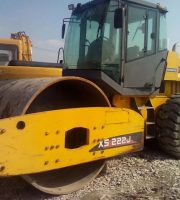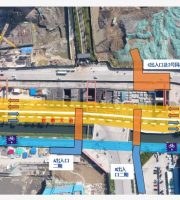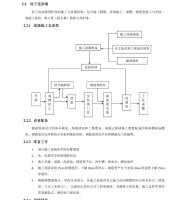Schematic diagram ▼ 4 | ground cover planting techniques reasonably select the arc according to the terrain, Garden Road and forest edge line to ensure the smooth and complete lines as far as possible
.
Positioning skills: select the high point of slope position on the main perspective (not necessarily the highest point of slope) as the center point of W (or inverted V), and the trend of W is consistent with the peripheral radian
. 
Because it is the practice of venting and leaving turf in the middle, two peripheral trees are configured at the large and small head of the ground cover line (the larger red circle in the figure)
.
Positioning skills: take the high point of the slope as the center of the circle, select the first tree on the main viewing angle line, take the distance between the center of the circle and this point as the radius, make a circle basically parallel to the peripheral arc of the terrain, and select the appropriate second and third points on the arc (the red dotted line is the forest edge line that can be referenced)
.
The smallest tree is selected for the intermediate transition plant, and the others usually follow the principle of near low and far high in the main perspective
.
Large terrain is dominated by large arc, and small terrain and flower border can adopt broken spell and small arc variable curve
.
In the figure, the planting method of single skeleton mixed with two trees is selected
. 

1 | tree planting positioning skills: first locate the first tree on the main viewing angle line, then locate the near end of the main viewing angle, and finally the far end
. 
The yellow dotted line is the direction of visitors’ line of sight, the red dotted line is the distance between the forest edge and the road, and the scattered tree and the back group should maintain a good spatial distance, which is independent of each other and has a clear boundary in sense
. 
❷ pay attention to avoid small acute angle interface between different color blocks as far as possible, and mostly use large acute angle or parallel interface
.
Fixed point skill: the largest tree is selected for the middle high point
.
The red circle position is the junction of the two main lines of sight
.
Try to use large acute angle or small obtuse angle interface
. 
It is also applicable when the height difference is large
.
7 | connection effect between lawn and floor at Turf joint ▼.
.
If the small slope is higher than the large slope and the size difference is obvious, take the large slope as the reference principle
.
The varieties with dense leaves, short growth and pruning resistance shall be selected for edging seedlings
. 
Pay attention to the combination with terrain, and can follow the trend, that is, the configuration form of large terrain clusters and highland high clusters, which fully expresses the effect of mountain shape fluctuation
.
The middle transition position shall be offset to the large slope
.
There is a certain flexibility in the selection of tree size
.
It can be seen from here that M-type double slope planting is an application of M-type single slope planting in a wider space
The angle shall be opened in parallel according to the slope type to avoid right angles and equilaterals
.
2 | flower shrub planting case demonstration 3 | open space greening configuration: select plants with high ornamental degree to be used alone at some nodes, which can break the restrictions of cluster lines and frames and produce a refreshing effect, but the separation between cluster (yellow line) and solitary plants (red circle) should be clearer
. 
At the center point, select the tree with the largest volume and the highest crown height
.
Schematic diagram ▼ how to divide the open space with or without reference? Schematic diagram ▼ the landscape construction mode of virtual space division can refer to the planting mode after space division of real garden road
.
When the sizes of the two slopes differ greatly, the principle of four or six points shall be adopted
.
Select dwarf plants in front of the main viewing angle (the red dotted line is the forest edge line that can be referenced)
.
Positioning skills: select the highest point of the two slopes as the starting point
.
6 | mosaic color block ❶ the application form of mosaic color block is more suitable for micro or small local landscape
.
Positioning skills: select the high point of the slope to plant a single skeleton tree, whose volume should be significantly larger than that of the second tree
.
The relationship between the location of solitary or scattered trees and large clusters ▼ each cluster should change in shape, volume, height and size, with different expression emphases
.
The outer edge line is preferentially planted, and the inclination angle decreases from outside to inside
.
5 | when it is difficult to deal with the narrow and long rectangular terrain, the broken arc and multi-S small radius arc can be used
.
The edging ground cover is tilted downward and planted along the slope
.
The landscape creation methods are diverse and not limited to details, but you should be familiar with the color, texture, form, main ornamental characteristics and spatial level of plants
.
Omega shaped forest edge line can increase the landscape depth, thickness and spatial density change
.
It is an excellent forest edge line division method
.
It is best to be evergreen, with dense leaves, strong separation force and repair and shear resistance
.
Combined with the actual situation, use V-shaped or C-shaped with the second tree
.
The ground cover curve in the front row is smooth and can not expose the soil
.
The seedlings are planted along the slope obliquely downward
. 
During planting, the seedling size is selected, and the planting principle of low in front and high in rear is followed
.



